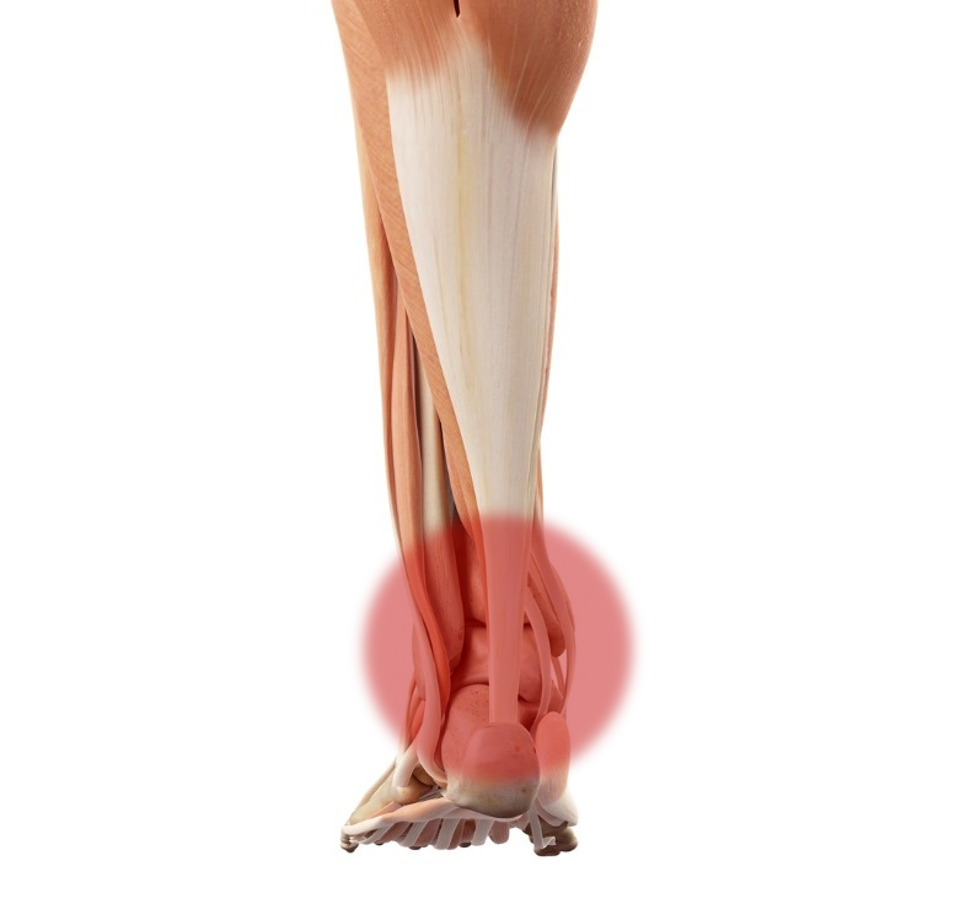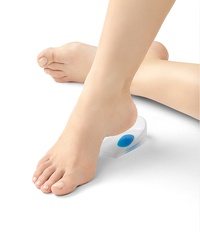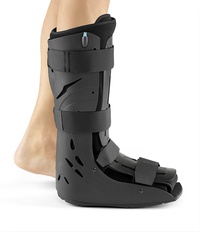Achilles Tendon Rupture
This article will explain the causes, symptoms and possible treatment options for an achilles tendon rupture.
What is Achilles Tendon Rupture?
An achilles tendon rupture is the complete or partial tear of the achilles tendon. The most common cause of this is a sudden, forceful motion that stresses the soleus muscle (musculus triceps surae).
Causes
The achilles tendon, the strongest tendon in the human body, does not rupture without reason. In most cases, there are pre-existing conditions such as an achilles tendon inflammation or achilles tendonitis. People aged between 30 and 50 are most at risk. Men are five times more likely to suffer from an achilles tendon rupture than women. Other risk factors are:
- Overloading
- Poor fitness levels
- Diabetes mellitus
- Medicine like antibiotics or cortisone

Symptoms
It is not uncommon to hear a loud snapping sound, similar to whiplash when the achilles tendon rupture. Typical symptoms are pain and swelling in the area of the heel and/or the calf, a noticeable bump above the heel, and loss of function of the calf muscles. It feels impossible to stretch the foot without help.
Diagnosis
After an achilles tendon rupture, a doctor will be able to feel a palpable lump at the severed tendon. Additionally, the patient will not be able to stand on their toes while performing a single-heel rise test. Imaging techniques such as ultrasounds, MRI, or X-rays may help to make a diagnosis.
Conservative Therapy
Non-surgical treatment of an achilles tendon rupture is only feasible if the tendon ends are close enough to each other. In these instances, they can grow towards each other by resting the tendon with the foot flexed down. To accomplish this, the ankle joint is immobilised for 4 to 8 weeks with a cast, an orthese, or a special shoe. Afterwards, physiotherapy helps to regain strength, stability, and flexibility.
In general, young and active patients tend to opt for surgery because the achilles tendon does not heal well when treated conservatively and there is a heightened risk of rupturing it again.

Surgery and aftercare
Two different surgical techniques may be used for achilles tendon rupture: an open and a minimally-invasive (percutaneous) surgical procedure. The difference between the two methods is the length of the skin incision. The advantage of the minimally-invasive procedure is improved wound healing and less scarring.
During the surgery, the ruptured tendon ends are sowed or glued together. If the achilles tendon is frayed significantly, then the tendon may be strengthened using rhizoplastic.
The foot has to be rested for 6 weeks after the surgery. A calf-foot-ortheses helps hold the foot in a flexed down position and provides support for when patients are gradually introducing physical loads. The aftercare is accompanied by physiotherapy to ensure a progressive mobilisation and strengthening.
Further information







